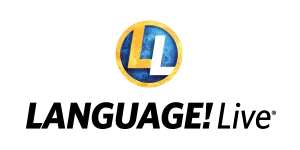Why the ‘Science of Reading’ Needs the ‘Science of Teaching’

The “science of reading” refers to a vast body of multidisciplinary research providing a rationale for what must be taught to ensure almost all students can learn to read. I have championed this movement and supported organizations such as the International Dyslexia Association®, the Reading League, Decoding Dyslexia, the National Council on Teacher Quality, and the American Federation of Teachers who are furthering awareness of reading science. Their efforts are producing meaningful changes in states’ policies, regulations, budget allocations, and program adoptions that should result in widespread use of better practices. I wonder, however, if this movement will be enough to advance more effective literacy instruction; it may not be, unless teaching practices themselves receive more attention.
I recently read a paper by and heard a presentation from Jean Stockard, professor at the University of Oregon and a social science researcher, that stopped me in my intellectual tracks (Stockard, 2021). Dr. Stockard conducted a large meta-analysis on the effectiveness of Direct Instruction (DI) programs—which many readers may associate with scripted, dry, dull, and inflexible programming that takes the joy, art, and creativity out of teaching. (Alas, those criticisms are easily found in opinions expressed by detractors.)
What did Dr. Stockard’s analysis find? DI programs were so effective in promoting learning and getting real results, especially with under-resourced students at risk for failure, that they outperformed all others to which they were compared. Her findings reinforce many prior analyses, such as John Hattie’s studies of the factors that have the greatest impact on student learning (Hattie, 2012), or the Archer and Hughes (2011) book, Explicit Instruction. Let’s ask why and have a look at what we should be taking away from yet another reminder that it’s teaching that matters most.
DI programs were developed with rigorous field research by Seigfried Englemann and his many students and colleagues beginning in the 1970s. They include, but are not limited to, Reading Mastery, Language for Learning, and Language for Thinking, Reading, and Writing. The most basic assumption is that if students are not learning, the instruction is at fault—not the student, who is capable of inferencing, conceptualization, and applying learned skills. The teaching process requires clear presentation and definition of what is to be learned, appropriate examples and non-examples, sufficient guided practice, immediate corrective feedback, and practice for generalization to a stated performance goal. The subject matter content is broken into manageable steps that build on one another so learning is cumulative. The teacher is to check for mastery of what is taught and to incorporate more review and practice until goals are achieved.
The tenets of “direct instruction,” also known as “little DI,” are incorporated into many of our better reading instruction programs, even those that did not emanate directly from Englemann’s legacy. Policy and practice guidelines on the science of reading often mention the importance of “systematic, explicit” instruction. Yet, the “how” of teaching seems to be getting short shrift in comparison to the emphasis on the “what.”
The “what” or content of reading instruction is often characterized with reference to the “five pillars” or “five components” that were each addressed by the National Reading Panel Report of 2000. Most state standards and policy guidelines name these essential components of instruction: phoneme awareness, phonics, fluency, vocabulary, and reading comprehension. Often added to the list is oral language, spelling, and writing. The content-related issue now being debated concerns the interrelationships of these components, their relative emphasis—for whom and at what point in reading development—and what level of content mastery to expect. For maximum effect, however, the right content must be married to best teaching practices of the direct instruction variety.
In past writings, I’ve discussed the importance of structured language teaching, especially for students who are struggling, with an emphasis on language. LANGUAGE! Live® was designed to teach that content. Without systematic, explicit, cumulative teaching of the lessons, however, the impact of the content will be diluted. The lessons were scripted and sequenced with teachers’ needs for guidance in mind, as well as students’ needs for engaging, clear instruction with sufficient practice to ensure mastery. Skipping around in the program, or avoiding sections, will weaken the effects. For example, students may not adopt the new vocabulary to which they have been exposed without sufficient speaking, reading, and writing practice. Students may habitually get by with surface-level understandings without opportunities to reread texts for specific purposes. Students may avoid applying what they’ve learned about multisyllable words unless they are expected to transfer decoding skills into text reading.
Significantly increasing the proportion of students who are at basic, proficient, and advanced levels will require more than an embrace of the critical content from reading science. In every classroom, we need to ask, Are the lesson goals clearly stated? Is the content presented in digestible, understandable, and logically sequenced steps? Is guided, supported practice sufficient to lead to fluent application? Are the activities used to accomplish specific goals? Is there a plan for reteaching when necessary? Is progress being tracked?
Developing expertise in lesson delivery and evaluation is a long-term but very rewarding undertaking which will transform the science of reading into “success for all.” It’s time to capitalize on the science of teaching.
Learn more about the Science of Reading
References
Archer, A.L. & Hughes, C.A. (2011). Explicit instruction: Effective and efficient teaching. New York: Guilford.
Hattie, J. (2012). Visible learning for teachers: Maximizing impact on learning. New York: Routledge.
Stockard, J. (2021). Building a more effective, equitable, and compassionate educational system: The role of direct instruction. Perspectives on Behavior Science, 44, 147–167.

